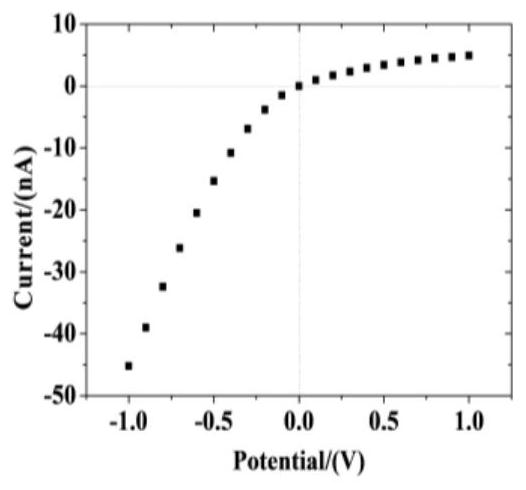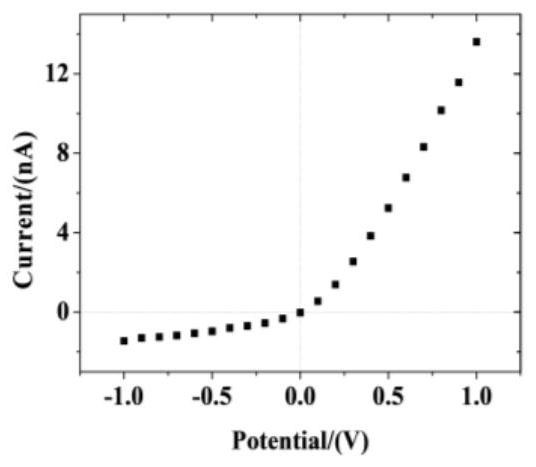Method for preparing pH-responsive nanofluidic diode based on nanopores modified by polyarginine and polyglutamic acid layer by layer
A technology of nanofluid and polyarginine, which is applied in the field of nanofluid, can solve problems such as the difficulty of specific structural molecules, the difficulty of entering modified substances, and the poor repeatability of nanofluid diodes, so as to avoid the effect of insufficient modification density
- Summary
- Abstract
- Description
- Claims
- Application Information
AI Technical Summary
Problems solved by technology
Method used
Image
Examples
Embodiment Construction
[0025] Now in conjunction with embodiment, accompanying drawing, the present invention will be further described:
[0026] The present invention provides a new method for preparing a nanofluid diode responsive to pH based on solid nanopores. The preparation process and working principle are as follows:
[0027] 1. Nanofluidic diodes with anion selectivity under pH action:
[0028] First, clean the PET surface, etch the nanopores by chemical etching, soak the etched nanopores in 0.5 mg / mL PLR solution for 6 hours, take them out, rinse them with secondary water, dry them, and put them in Put in an oven at 60° C. for 3 hours to obtain polyarginine-modified solid-state nanopores. The structure of the polyarginine molecule (see Figure 5 ).
[0029] The molecular structure of PLR has a large number of amino functional groups, which are positively charged in solution. Nanofluidic diodes with anion selectivity were obtained under the pH effect of PLR modified nanopores.
[0030]...
PUM
 Login to View More
Login to View More Abstract
Description
Claims
Application Information
 Login to View More
Login to View More - R&D
- Intellectual Property
- Life Sciences
- Materials
- Tech Scout
- Unparalleled Data Quality
- Higher Quality Content
- 60% Fewer Hallucinations
Browse by: Latest US Patents, China's latest patents, Technical Efficacy Thesaurus, Application Domain, Technology Topic, Popular Technical Reports.
© 2025 PatSnap. All rights reserved.Legal|Privacy policy|Modern Slavery Act Transparency Statement|Sitemap|About US| Contact US: help@patsnap.com



